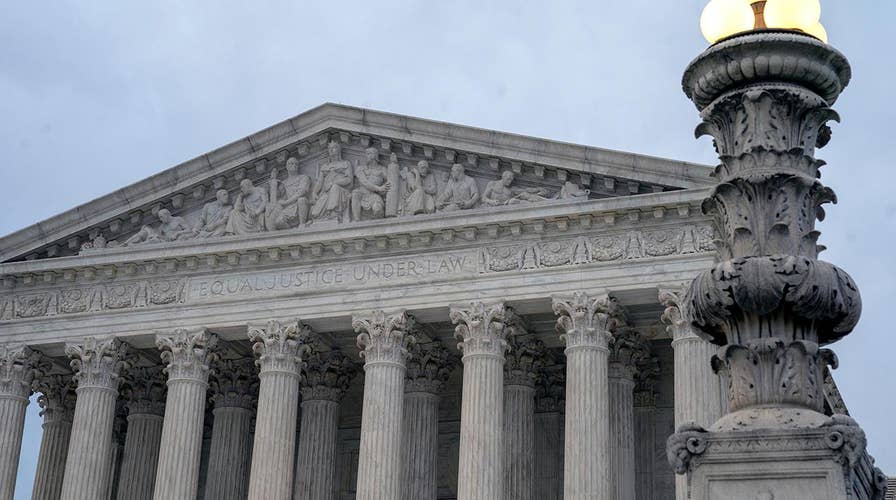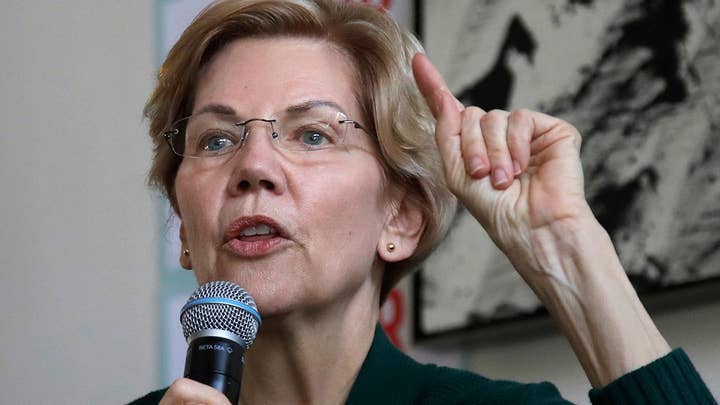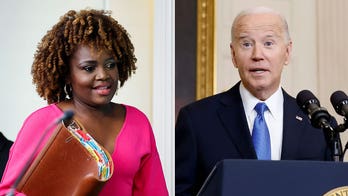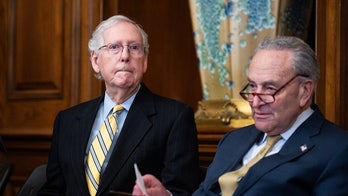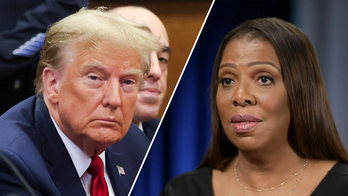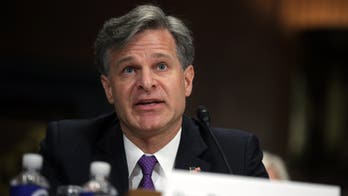2020 Democrats push for increasing the number of Supreme Court justices
Presidential hopefuls mull structural reform of the highest court in the land; senior political correspondent Mike Emanuel reports from Washington.
It's become the hot new topic on the 2020 presidential campaign trail: several Democratic contenders are talking up plans to overhaul the Supreme Court, with some offering proposals to add up to 10 more members.
Candidates including Sens.Cory Booker, D-N.J., Elizabeth Warren, D-Mass., Kamala Harris, D-Calif., and Kirsten Gillibrand, D-N.Y., have all signaled an openness to overhauling the court if they become president. And progressive groups are putting their money behind the message, an effort to tap into lingering liberal anger over President Trump's two nominees confirmed to the high court.
BERNIE SANDERS ANNOUNCES TOP STAFFERS IN WAKE OF SHAKEUP
"First they steal a Supreme Court seat, and then they turn around and change the rules on the filibuster on a Supreme Court seat," Warren said in a recent radio interview. "So when it swings back to us what are we going to do? I think all the options are on the table."
Neil Gorsuch was confirmed after former President Barack Obama's choice -- Judge Merrick Garland -- languished in the Senate without a hearing or vote during the 2016 election year. Brett Kavanaugh's confirmation process was defined by allegations of sexual misconduct, which riveted and divided the nation last year. Both were confirmed mostly along party lines.
The solution of many Democrats? Add more members, while changing the rules for who can serve and for how long.
Among the proposals are rotating justices on and off the bench from the lower appellate courts and imposing term limits for currently life-tenured federal judges.
"I would like to start exploring a lot of options," Booker said Monday. "Term limits for Supreme Court justices might be one thing."
South Bend, Ind., Mayor Pete Buttigieg's plan is more specific.
"One idea that I think is interesting is, you have 15 members, but only ten of them are appointed in the political fashion. Five of them can only be seated by unanimous agreement of the other ten," he told "Fox News Sunday." "The bottom line is, we've got to make some kind of structural form to depoliticize the Supreme Court."
President Trump fired back at such proposals during a Rose Garden press conference Tuesday.
"I wouldn’t entertain that. The only reason that they’re doing that is they want to try and catch up," he said when asked about so-called court-packing schemes.
It is no secret the other two federal branches have long chafed at high court rulings limiting presidential and congressional power.
ELIZABETH WARREN PITCHES POLICIES TOTALING $100 TRILLION AT TOWN HALL: ESTIMATES
So to change the decisions, the thinking goes, change the deciders. With more choices, a new Democratic president could quickly offset the current 5-4 conservative majority.
But the strategy, even tossed about idly on the campaign trail, can be politically perilous.
"Something this controversial could be bad for Democrats indeed in the 2020 election," said Ilya Shapiro, director of constitutional studies at the libertarian Cato Institute. "Where does it end? If President Kamala Harris adds two justices, then the next Republican president adds two more in a constant cycle, until we end up with 134 people on Supreme Court."
Senator Michael Bennet, D-Colo., himself seriously considering entering the crowded presidential field, was even more dramatic in his dismissal of the idea. The Washington Post reports he repeatedly slammed his head on the table when asked about it.
"Having seen up close just how cynical and how vicious the Tea Party guys and the Freedom Caucus guys and Mitch McConnell have been, the last thing I want to do is be those guys," he said last week. "What I want to do is beat these guys so that we can begin to govern again."
The Constitution does not establish a set number of justices; that is up to Congress. There were initially six members of the high court -- then seven, then nine, then down to eight, then up to ten for a while, then back down to eight, and then at last ticking up to nine more than a century ago, in 1869.
But that was not enough for Franklin D. Roosevelt. Frustrated with the conservative Supreme Court striking down many of his "New Deal" Depression-era social reforms, the Democratic president proposed adding up to six more members.
"I will appoint justices who will not undertake to override the judgment of the Congress on legislative policy," he said in a "Fireside chat" radio address in March 1937.
Roosevelt's so-called "court packing" plan met with widespread public and political condemnation, and was soon abandoned.
When it comes to configuring the federal courts, Congress sets the rules. In 2011, then-Senate Majority Leader Harry Reid, exasperated with GOP opposition to Obama's nominees, eliminated the filibuster threshold for most of the president's judicial choices.
Current Majority Leader Mitch McConnell, R-Ky., expanded the decision in 2017 to include Supreme Court nominees, helping Gorsuch become the 113th justice.
Democratic anger over Trump's success filling the range of federal courts with conservative jurists has been fueling much of the recent court expansion talk. A private advocacy group called "Pack the Court" says it's raised a half-million dollars to gin up support among the 2020 contenders. The group is partnering with other like-minded organizations.
"We strongly believe that reforming the court — especially by expanding it — is the cornerstone for re-building American democracy,” said Brian Fallon, head of Demand Justice and former Hillary Clinton press secretary. "The Kavanaugh court is a partisan operation, and democracy simply cannot function when stolen courts operate as political shills."
Court watchers on both sides of the aisle warn such talk -- from either the right or left -- has little practical or societal benefit.
"What's being proposed is a pure political plan and that's going to be controversial and polarizing," said Shapiro. "If you start adding justices for purely partisan motives, that can't help but divide the country even further."
